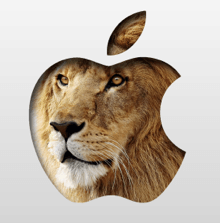Apple recently announced their new operating system Mountain Lion (Mac OS 10.8) to be released later this summer. It will move the Mac  OS and iOS closer together so that you have a more consistent experience across your Mac and iPad/iPhone/iPod Touch devices. It will also make even more efficient use of iCloud.
OS and iOS closer together so that you have a more consistent experience across your Mac and iPad/iPhone/iPod Touch devices. It will also make even more efficient use of iCloud.
Motivated by this new operating system coming soon and the fact that MobileMe is going away in a couple of months (June 30, 2012), my best advice is to move quickly toward upgrading your current Mac to Lion and iCloud (Mac OS 10.7).
Upgrading, is somewhat painful for some people because it may require losing some older applications that will not longer run. Quicken 2007 is one such app people complain about. There are several options available. Other apps that will no longer run are those based on the old PowerPC architecture and the emulator called Rosetta that was used in previous Mac OS to run this software. Dealing with change is tough but in order to move into the future of technology I recommend going with Apple’s direction. They are innovating quickly.
So, if you’re ready to make the move to Lion, my #1 tip is this:
Make a full SuperDuper! backup of your workstation on an external hard drive BEFORE upgrading. If you have a Time Machine backup, you may believe you’re safe but I would argue that it is not enough to EASILY recover if something goes wrong. With a full system sofware change, it is quite possible that something may go wrong. See my backup article for some details.
Upgrade to the latest versions of all your applications. I’d also look at upgrading to MS Office 2011 if you have an older version. It is less expensive than ever and is a better version for compatibility with the Windows version of Office and the Mac OS.
In general, you always want your OS to be the OLDEST piece of software you’re running. This is because software needs to be upgraded to be compatible and take full advantage of the operating system.
In order to update from Mac OS 10.5 (Leopard), you will need to purchase Snow Leopard (10.6) before you can upgrade to Lion. Lion upgrades are done through the Apple App store and the App store can’t be installed until you’re on version 10.6…so upgrading may be a two step process if you haven’t upgraded in a while.
By the way… I always suggest that you open System Prefs>Software Update and turn off “Check for updates” so you do not get prompted for new software updates every week. You do not want to be the first person on the block testing new updates…especially if everything is working OK for you. Do system updates manually every few months when you know things have been backed up and you have a few moments in case something goes wrong.
MobileMe to iCloud (after your Lion upgrade)
If you currently utilize MobileMe, switching to iCloud can be somewhat complex depending on what services you utilize with MobileMe. Things will change. Deal with it. In order to upgrade to iCloud, all the Macs that access your calendars must be on Lion and all your iOS devices must be running iOS 5.
I moved all my home/office devices (2 iPhones, 2 iPads, 1 iMac, and 2 MacBooks) over to iCloud in one day. Choose a day when things are quiet and you don’t need to depend on your calendar or email immediately. Here are some helpful steps:
1. Check your Apple IDs and choose one as your primary ID. Make sure it is formatted as an email address. Go to http://appleid.apple.com and click on “Find Out”. Enter your name and up to 4 email addresses. If you find more than one Apple ID, login for each one and click on “Manage Your Account”. Make sure your info is up to date, and that you have some backup email addresses assigned to the account in case you get locked out. For more details check out this Apple link. For me, I had two Apple IDs…one primarily for iTunes purchases and the other for my MobileMe account. I chose to go with my iTunes account AppleID for iCloud…and skip the auto upgrade transfer of my MobileMe info. Before I upgraded I logged out of my MobileMe account on all computers.
2. Open iTunes, plug in all your iOS devices and turn off syncing of Mail, Calendars, Contacts, etc.
Click on the icon for your device, then the Info tab…and turn everything off. Then click on Apply. iCloud will handle syncing things back up in the future. I did this step to prevent the possibility of duplicate contacts and calendar entries and make things as simple as possible for the upgrade.
3. Make sure all your software is up to date. Install iOS 5 on your mobile devices and Mac OS X 10.7.2 Lion minimum on your Macs.
4. Make a backup of all the various components that MobileMe touches. Get a DropBox account and make a folder called “Backup” in your DropBox account. DropBox can replace the functionality of the old iDisk and do it much better. Gather the following files and place them in the Backup folder:
a. Backup your Calendars
Open iCal.
Select File>Export>iCal Archive and save a copy in the Backup folder.
Also click on each calendar individually and save as a .ics file in the Backup folder. These are useful for importing one calendar at a time.
b. Backup your Mail.
In the Finder, find folder USERNAME/Library/Mail. If the folder is not visible, hold down the Option key and choose Library from the Finder’s Go menu.
Click on the folder choose “Compress Mail” from the File menu zip it up.
Drag the Mail.zip folder to the Backup folder.
c. Backup your Address Book contacts
In the Mac OS X Address Book app, Select File>Export>Address Book Archive and save a copy in the Backup folder.
d. Backup Safari Bookmarks
Select File>Export Bookmarks and save a copy in the Backup folder.
e. iDisk – Move any important files into DropBox Backup folder. (Note: The free DropBox account has a limit of 2 GB.)
5. Then do a full backup of your computer with SuperDuper!
6. Follow through the MobileMe to iCloud upgrade process. The following Apple articles will assist: http://www.apple.com/mobileme/transition.html and http://me.com/move
7. Open iCal. Create a New Calendar and import from your backups in iCal.
8. At the end after moving calendars, restart your computers…and wait patiently for things to sync to the cloud.
9. Turn on iCloud on each of your iOS devices.
If you’d like assistance making the move to Lion and iCloud give us a call and we can help you remotely nearly anywhere in the world.


